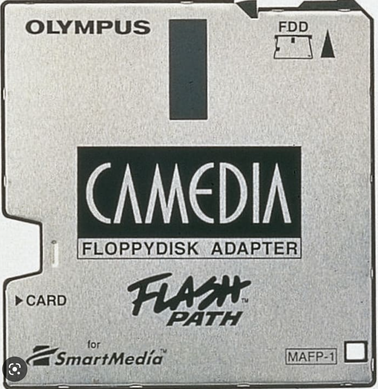Hi! They used to be quite common back in the day.
I think circa 1996 to 2001 or so.
The idea was to allow reading your digital camera's pictures on a PC.
Back then, USB didn't really exist and people still used SCSI and parallel ports to interface with media.
It was that time frame when Compact Flash readers had a parallel cable, still.
And when PCMCIA/CF adapters were still in use.
In that time frame, these floppy simulators made sense.
They accepted Sony Memory Stick and Smart Media Card, the latter was like an oversized MMC/SD card.
With a fatal flaw, I vaguely remember: It could die from formatting errors.
Anyway, that floppy works similar to those cassette adapters for the car stereo.
You know, those old style models with the audio cable coming out on one side:
Inside, there is a magnetic write head that works similar to a loudspeaker.
It just doesn't make sound, but magnetizes the surface of a magnetic material.
In case of the cassette, it writes directly to the read head in the car stereo.
Those MP3 cassettes work pretty much the same way.
The diskette is a bit more sophisticated, of course.
It has both a write/read head inside and uses a metallic disk as a medium.
The special software for PC (Win95 up, afaik) allows using the diskette adapter to the fullest (several Megabytes).
It will stream the data in a non-standard way that the special software then re-assembles on the fly.
It's perhaps possible that it can look like a 1,44 MB floppy if the special software isn't used, not sure. 🤷♂️
"Time, it seems, doesn't flow. For some it's fast, for some it's slow.
In what to one race is no time at all, another race can rise and fall..." - The Minstrel
//My video channel//
